Once your baby starts to crawl, watch out!
It will feel like the blink of an eye before they start walking, and you can’t keep up. Typically, babies begin to walk between 11 and 13 months, though this varies from child to child.
Babies develop at their own pace, but there are some signs you can look out for that signal your baby is ready to walk, as well as steps you can take to encourage your baby to start walking.
Your little one will be walking in no time! All it takes are those remarkable first steps.
How can you encourage your little one to learn to walk? Let’s take a look.
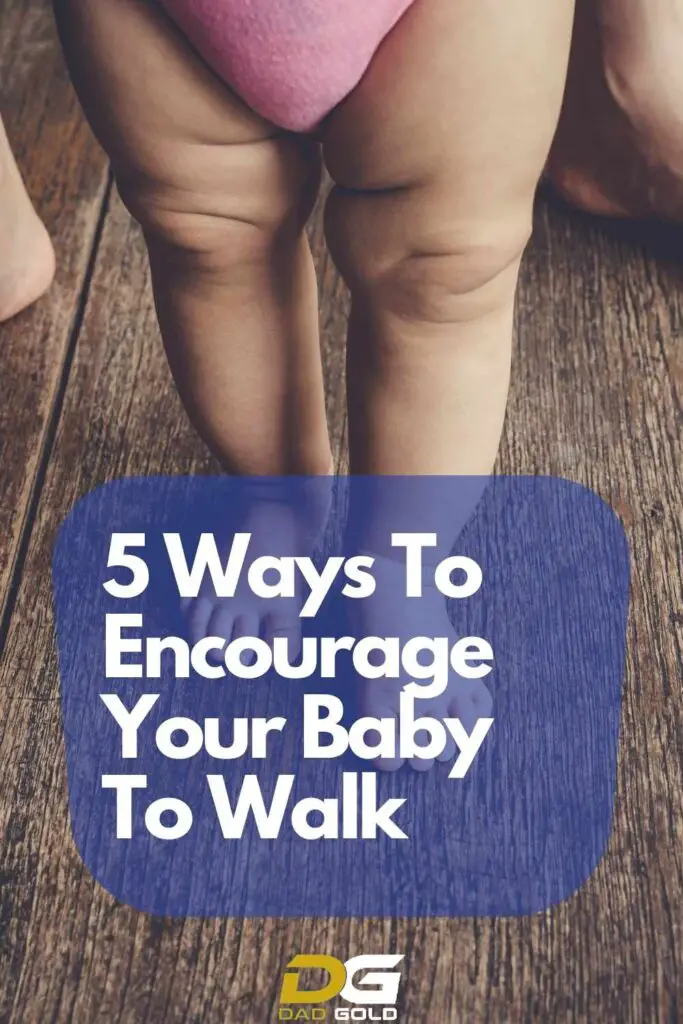
What to Look Out For
Eagle-eyed parents take note of their baby’s developmental milestones, eagerly awaiting all their significant firsts.
Some babies can jump straight to walking, while others take a little more time to develop their fine motor skills.
Here are three everyday actions your baby will take in preparation for their first steps.
-

Bold Male Pride – Baseball Trucker Cap Celebrating Masculinity
£18.00 Select options This product has multiple variants. The options may be chosen on the product page -

Dad Bod Appreciation Gift Mug
£14.00 Add to cart -

Dad Bod, Bad Jokes Structured Baseball Cap
£22.00 Select options This product has multiple variants. The options may be chosen on the product page
You’ll want to encourage your baby to start walking when you notice these behaviors.
Crawling
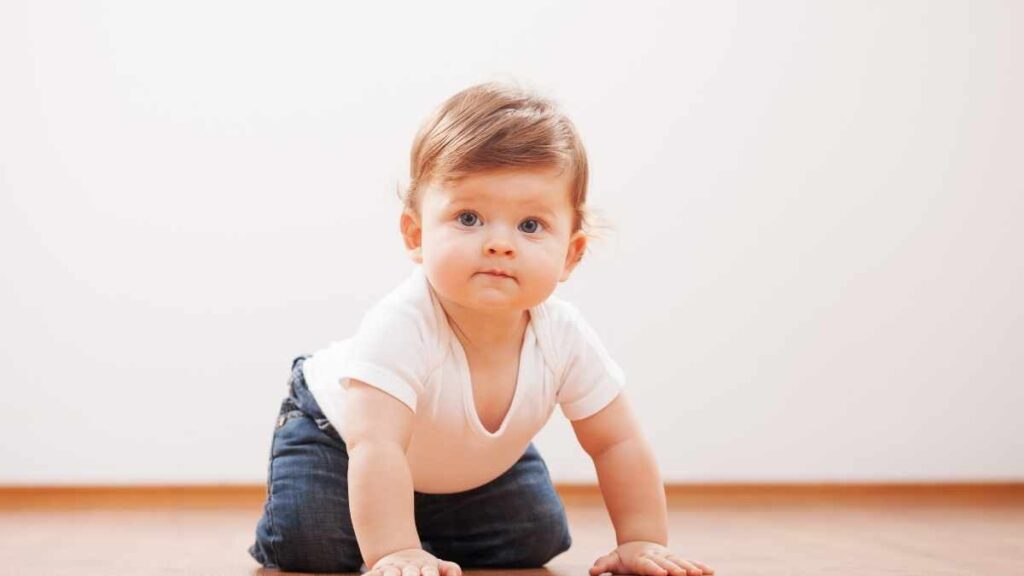
Crawling is the first sign your baby is ready to be on the go and get moving on their own, and this should start to happen between 7 to 10 months.
Alternating their arms and legs to propel themselves forward requires a lot of fine motor control for a baby, though some babies can start by simply rocking back and forth on their hands and knees.
Instead of crawling, your baby may start to creep at first, pulling themselves forward with their arms and dragging their feet and body behind them.
Your baby’s arms are stronger than their legs at this stage of development, so they use those muscles to move forward.
Scooting
Another way your baby is prepping to walk is when they start scooting. This could be on their bottoms or their stomachs based on their preference, but your baby is learning how their limbs work, controlling their arms, legs, and even bellies to get them where they want to be.
The ground lends added support, helping your baby feel stable and comforted as they scoot along.
Cruising
Before your baby can walk independently, they will likely start to stand with support. This could be you, furniture, toys, and so much more.
Your baby is taking steps, cruising with the help of whatever they hold on to. This is also building their leg muscles ready for walking.
Your baby will often fall as soon as they let go, so your home must be babyproofed to prevent injuries.
Ways to Encourage Walking
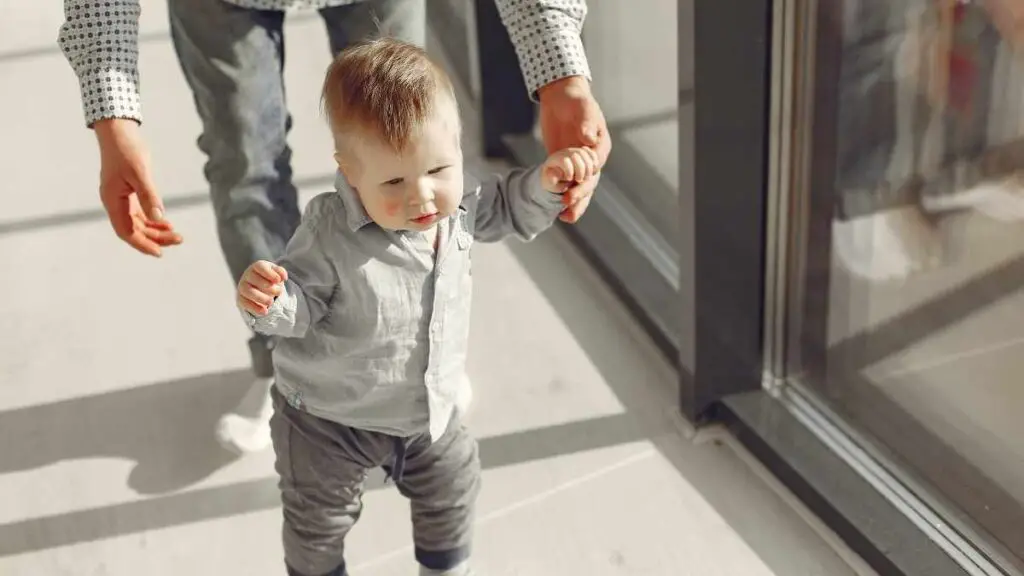
When your baby starts trying out any or all of these steps, they are preparing to walk on their own, and you can begin to encourage your baby to walk using some of the below tips.
1. Hold Your Baby’s Hands
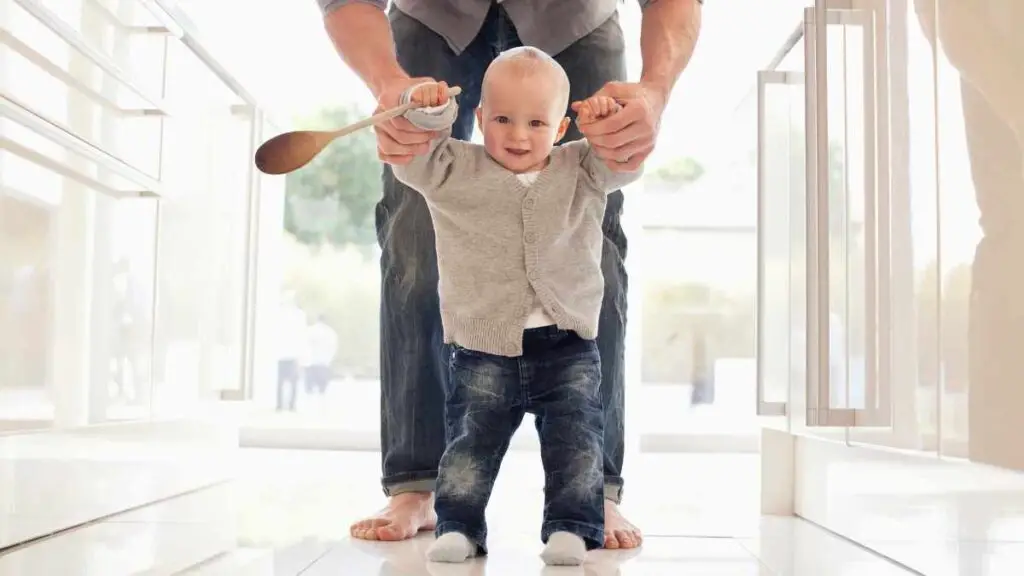
Be your baby’s support, holding their hands as they take their first wobbly steps to explore their surroundings. This will help your baby to feel comfortable as they lean on mom and dad and learn how to work their legs – which is no easy task!
The more you walk with your baby, the more they will learn balance and strength, feeling empowered to take their first steps independently.
2. Encourage Cruising
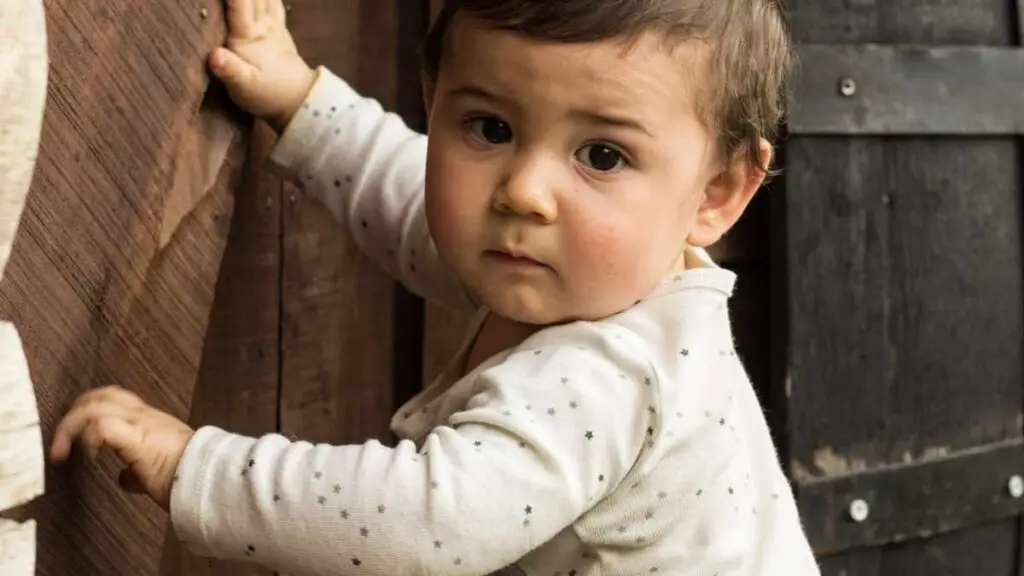
Cruising is a great indicator your baby wants to start walking, so be sure to encourage the behavior.
Help your baby stand up next to furniture or other stable surfaces – that are babyproofed, of course – and cheer them on as they walk.
Your baby will thrive under positive reinforcement, chasing you as they wobble along. Hold your baby up, to begin with, just to help them in the standing position.
3. Skip the Shoes
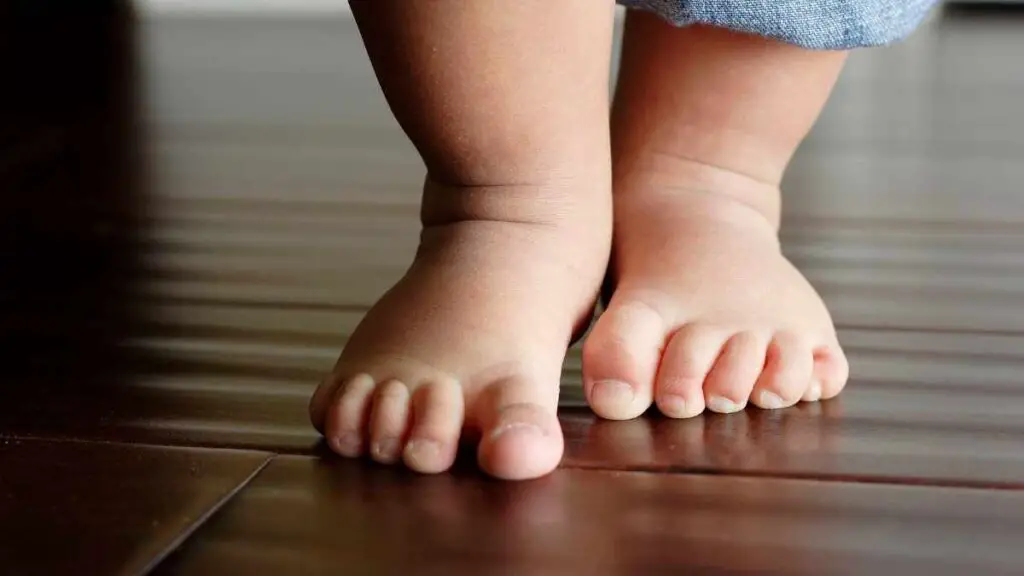
Let your baby move around barefoot or with non-slip socks when you’re inside. This helps your baby’s feet, ankles, and arches to develop.
It also helps them to learn how to balance their weight, not hindered by the added weight of shoes or stiffness that could stop them from walking.
If your baby needs to wear shoes, especially outside, make sure they are comfortable, lightweight, and flexible. You don’t want to restrict their movements as they learn to walk.
4. Use Push Toys To Help Your Little One
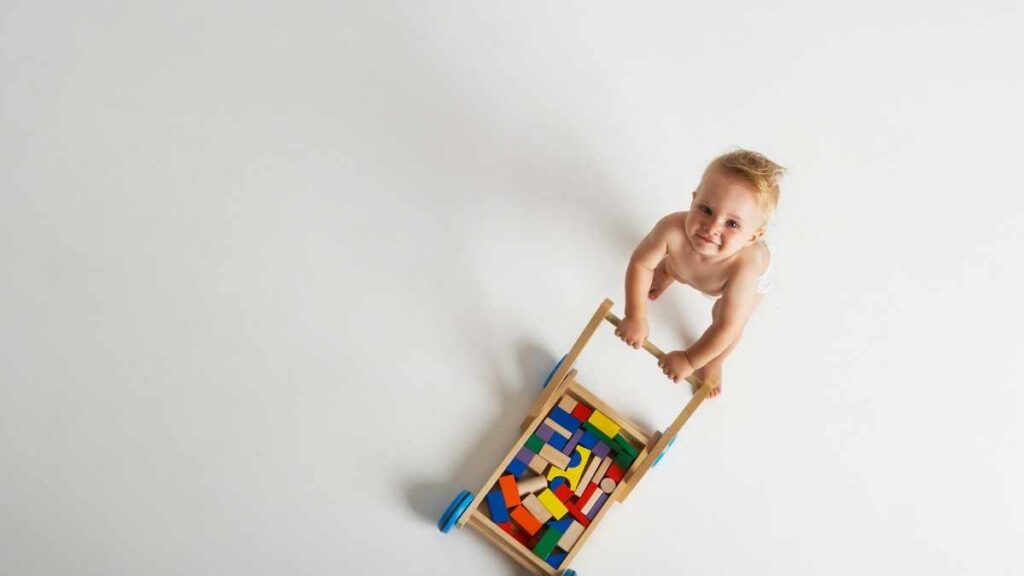
Push toys are fun ways to encourage walking and often include other sensory experiences to help keep your baby stimulated.
At first, you will need to show your baby how it works, but in no time, they will use this as another opportunity to cruise around the room.
Some push toys mimic household items and work like their full-sized counterparts!
Your little one will enjoy holding onto their new toy to build strength in their leg muscles, ready for the big first steps.
5. Entice Your Baby To Learn To Walk
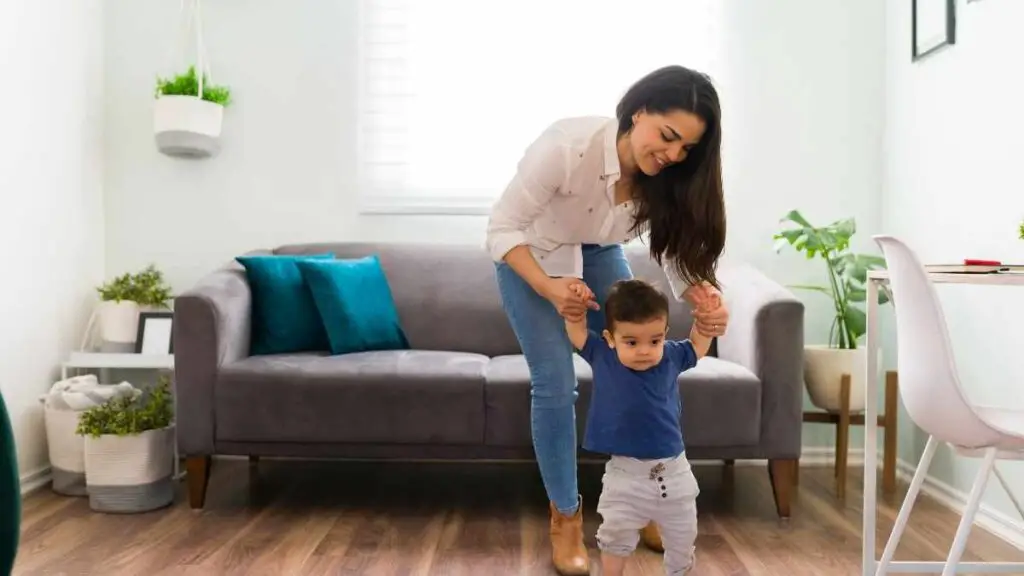
Does your baby have a favorite toy?
Are they more attached to one parent over the other?
Are they food motivated?
Start to tempt them to walk by leaving a trail they find hard to resist. This will encourage your baby to walk because they want to get back to playing!
You can also keep increasing the distance between your baby and the reward to keep them moving.
Don’t Forget to Celebrate First Steps!
One of the best things you can do is to praise your baby while walking. Give them lots of encouragement and love as they move.
Make sure you treat it as a big deal! Because it is.
They will respond much better to positive enforcement and want to chase that high of doing a good job. And after you are done walking, make sure you reward them.
This could be a snack or simply a hug. If your baby is trying to catch a toy, let them play with it. Let them see a cause and effect between walking and achieving their goal.
Be patient while they learn to walk.
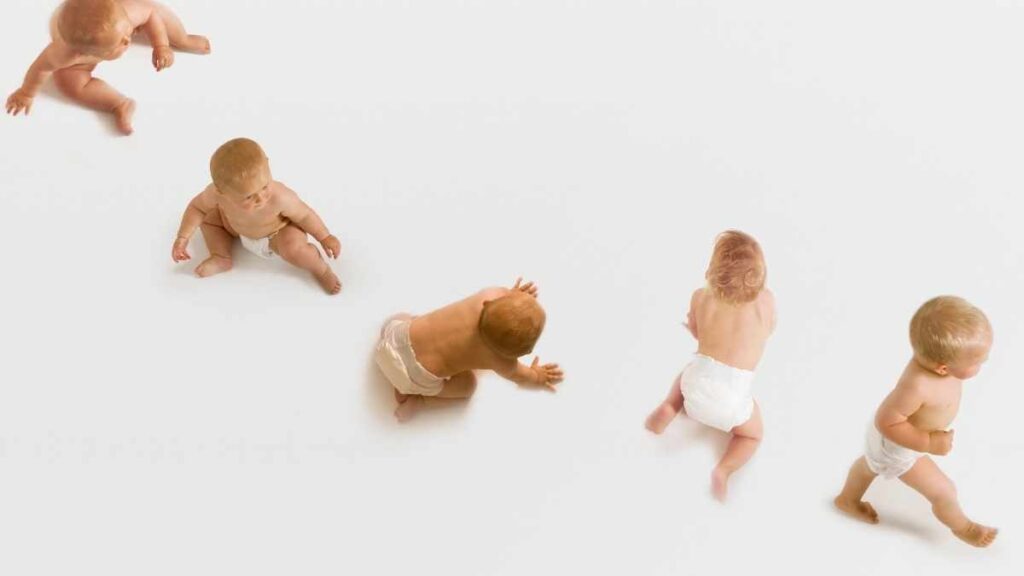
While most babies will walk between 10 and 15 months, some will start sooner or even later. So while it may be tempting – don’t try to rush your baby.
Your baby’s bones and muscles are still developing, growing, and strengthening with each passing day, and they will walk when ready.
But that doesn’t mean that you should stop encouraging them to walk! Instead, work with them to help foster their development.
This helps your baby to walk and strengthens your bond with your baby. In no time, your baby be off to the races!
Conclusion
The first steps are probably one of the biggest milestones in your baby’s early life. It is something that I was keen for both my sons to achieve, but when they did, I was keen for them to slow progression down! On one side, the progress was good, but on the other, the danger was lurking!
When kids learn to take a step, it opens their world to new areas of your home. I said it above, and ill repeat it: Now is the time to ensure your home is baby-proof!
Good luck!

